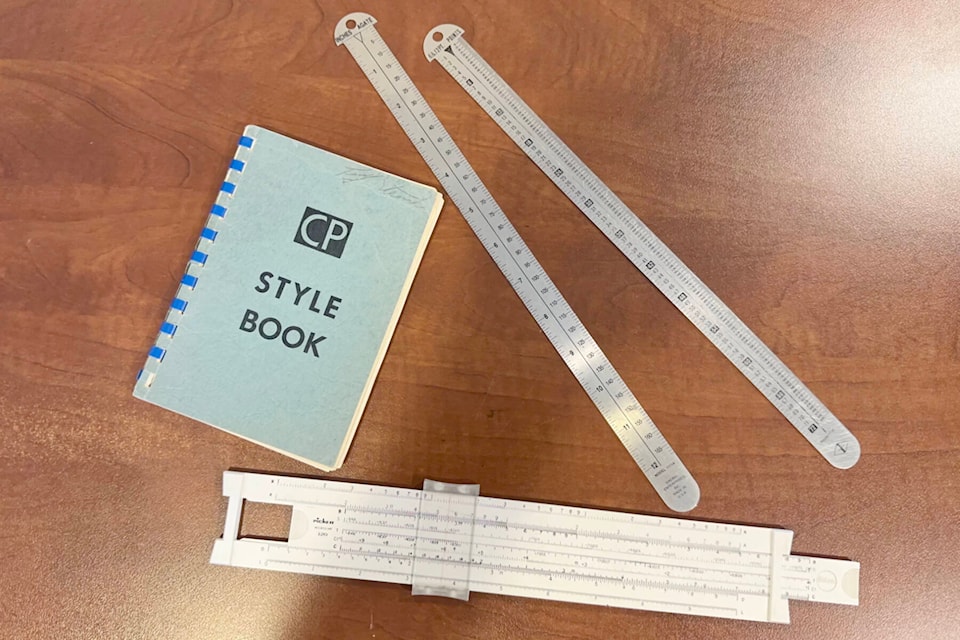There’s a slide rule at my desk at the Summerland Review.
It’s been well used over the years and some of the numbers are hard to read. Years ago, it was one of the newsroom tools, but that was long before my time.
The slide rule was probably purchased in the 1960s or 1970s and while these devices were once considered state-of-the-art mathematical tools, they aren’t used much anymore.
By the end of the 1970s, the pocket calculator had replaced the slide rule and by the early 1980s, computers included calculator functions.
That slide rule is one of the relics to be found in the Summerland Review, but it’s not the only one.
I also have some old line gauges. These are stainless steel rulers used for measuring in inches, picas and points and agates. Some of these measurements are used in the newspaper industry, but nowhere else.
Line gauges were once essential at newspapers, but I doubt I’ve used one since the early 2000s.
I also have a copy of the Canadian Press Style Guide from 1957. This is the fourth edition of the guide, used by most English-language newspapers in Canada. It was useful at that time, but it has been updated many times since then. Today, the guide I use is the 19th edition, from 2021, and I expect an updated version will be available soon in responses to changes in language and changes in the world.
When I started working here in 1994, we had to roll our own film for black and white photographs. Earlier, there was a darkroom in our building. Today we use digital photography. I can still find camera film, but it’s more expensive and less convenient than using digital photography.
At one point, journalists would use manual typewriters to write news stories. Today we use computers and smart phones. It’s still possible to find new and used typewriters for sale, but the search isn’t easy. Finding a shop that does typewriter servicing and repairs is also going to be a challenge.
Technological advances change the way I do my work today. These same developments also affect the way people receive their news.
There’s something special about holding a copy of the paper, but we also publish our work online. It’s an important piece in getting the news out and keeping the community informed.
When I started at the Summerland Review, the internet was in its infancy. Our paper did not have email, let alone a website.
Today, new developments are happening in the online world, often at breakneck speeds. Social media continues to evolve. The development of artificial intelligence such as ChatGTP has the potential to bring about some huge changes online, and there are questions about how to use such a service in a responsible and ethical manner.
Technology has changed and will continue to change, and those who do not adapt will be left behind. In a decade some of the cutting-edge technology we use today may seem as dated as the old slide rule and line gauges.
It would be futile to insist on holding on to existing methods and technology when improvements are happening. And it would make no sense to revert to the methods we used in earlier decades. Besides, it would be impossible to retreat to an earlier era.
Despite the changes over the years, I’m not planning on giving away the slide rule, the line gauges or the 1957 Canadian Press Style Book. They are a part of newspaper heritage.
But they are not essentials in the world of today and tomorrow.
John Arendt is the editor of the Summerland Review.
